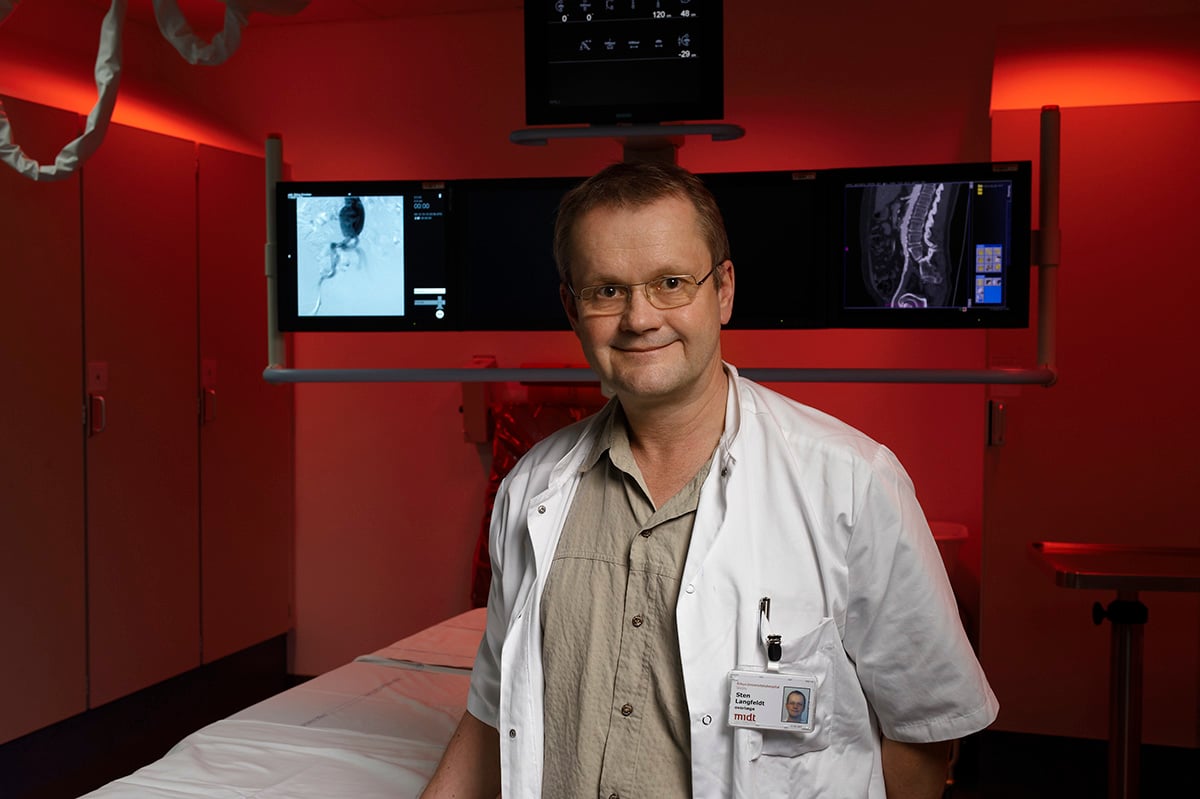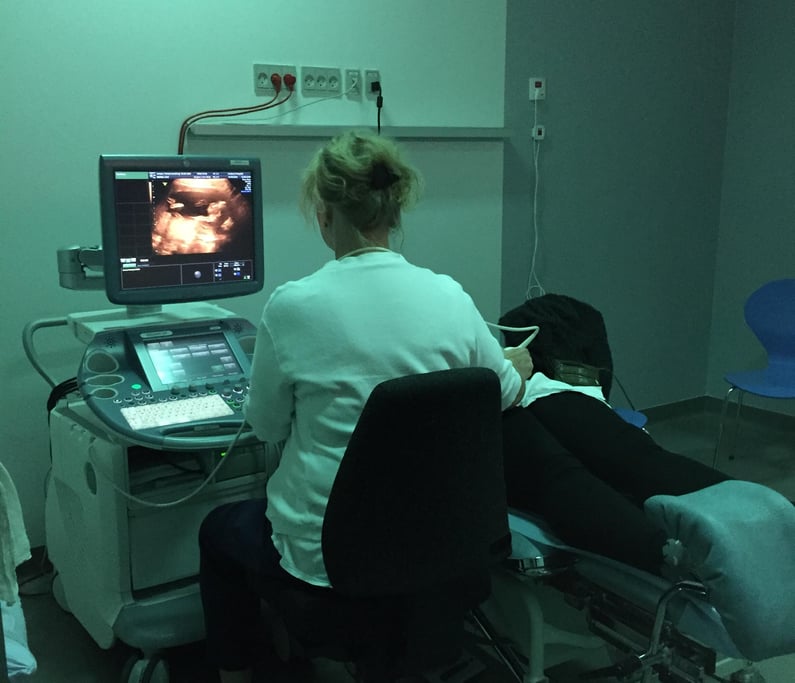Proper lighting guarantees an optimal screen display with clearer contrasts and fewer reflections. This enhances the work environment as it reduces eye strain and tension among the staff.
Ergonomic Lighting is used at Aarhus University Hospital, among other places, in the cardiology laboratory, hybrid operating rooms, angiography rooms, and in the diagnostic imaging department.
— Much of what we do revolves around monitors with grayscale images. By using colored light, the images appear sharper with clearer contours and more distinct contrasts, explains Steen Langfeldt, Senior Physician at the Diagnostic Imaging Department, Aarhus University Hospital.
Steen Langfeldt points out that the possibility of having more light in the room with Ergonomic Lighting is important compared to the past when they worked in darkness to avoid screen glare.

A full day in front of a screen
With up to eight hours spent in front of a screen every day, lighting becomes a crucial factor in terms of fatigue, concentration, and quality.
— A large part of our work time is spent looking directly at a screen, and it used to be much more burdensome. Since we have implemented Ergonomic Lighting, we experience less eye fatigue, which helps us stay focused for longer periods, explains Marianne Egeblad, the head physician at the Diagnostic Imaging Department, Aarhus University Hospital.
At Esbjerg Hospital, Ergonomic Lighting has been installed in the scanner and description rooms. Dr. Dorthe Ulrik Knudsen, a radiologist, emphasizes the importance of details and contrasts in the image for making an accurate diagnosis.
— Digital images can be very harsh on the eyes when looking at them all day. Therefore, lighting plays a significant role. There should be no reflections or glare from the light in the image.
Customized lighting settings
The lighting is controlled through an intuitive and user-friendly control panel, making it easy to switch between the pre-programmed lighting settings. Each room can choose up to nine different lighting settings, tailored to the room's needs, workflows, spatial conditions, and based on Chromaviso's user-documented experience from similar installations, as well as insights into workflows, lighting, and evidence of the impact of colors.
These different lighting settings ensure optimal lighting for screen work and provide the staff with flexibility and variation.
Typically, a reddish light is used to minimize glare and reflections on the screen, enhancing the grayscale tones in the image. On the other hand, a green light enhances contrasts on colored screen images and reduces eye strain.
For the Ultrasound Clinic at Hvidovre Hospital, Chromaviso has specially developed a sepia color that highlights the orange-brownish scanning images.

— We had a productive discussion about the lighting settings. We shared our needs and work requirements, and Chromaviso provided expertise on complementary colors and recommendations for optimal colors for ultrasound. We ended up with four settings that we are very satisfied with, giving us more options. It's a flexible solution that ensures we have the right lighting, says Jette Frederiksen, head nurse.
Ergonomic Lighting can also provide a bright white light and includes a powerful white cleaning light that gives an energy boost.
— Through the use of light, we are able to create better working conditions in the X-ray room, ultimately leading to improved outcomes for patients. When designing any new space, lighting should be taken into consideration.
Steen Langfeldt, Senior Physician, Aarhus University Hospital
Customized for individual workstations
At Rigshospitalet, Ergonomic Lighting is used in several specialties, such as the Clinical Physiological Nuclear Medicine Clinic, where the lighting solution is installed in description rooms with 10 workstations spread across 6 workstations in the same room - all with individual light control.
— We can now adjust the lighting individually to our liking. With the colored light, we no longer have to strain our eyes to see the details on the screen - this means we are less tired in our eyes and head after a day of work. And throughout the day, we can simply maintain our concentration for longer periods than before, explains Dr. Annika Loft Jakobsen.
Installed throughout Scandinavia
An increasing number of hospitals are opting for Ergonomic Lighting in their operating rooms and examination rooms, including diagnostic imaging. Some of these hospitals include Aarhus University Hospital, Rigshospitalet, Sygehus Lillebælt, Sygehus Sønderjylland, Aalborg University Hospital, Regionshospitalet Viborg, Sahlgrenska Sjukhus, and Skarreborgs Sjukhus.
— Initially, one might not associate ergonomics with lighting. However, in this case, it's about how lighting improves working conditions in the X-ray room - ultimately leading to better results for the patient. When designing any new space, lighting should be taken into consideration, explains Steen Langfeldt.
— Now, each of us can adjust the lighting to our preference. With colored light, we no longer strain our eyes to see the details on the screen - which means we are less tired in our eyes and head. Throughout the day, we can maintain our concentration for longer periods, adds and concludes Annika Loft Jakobsen.

